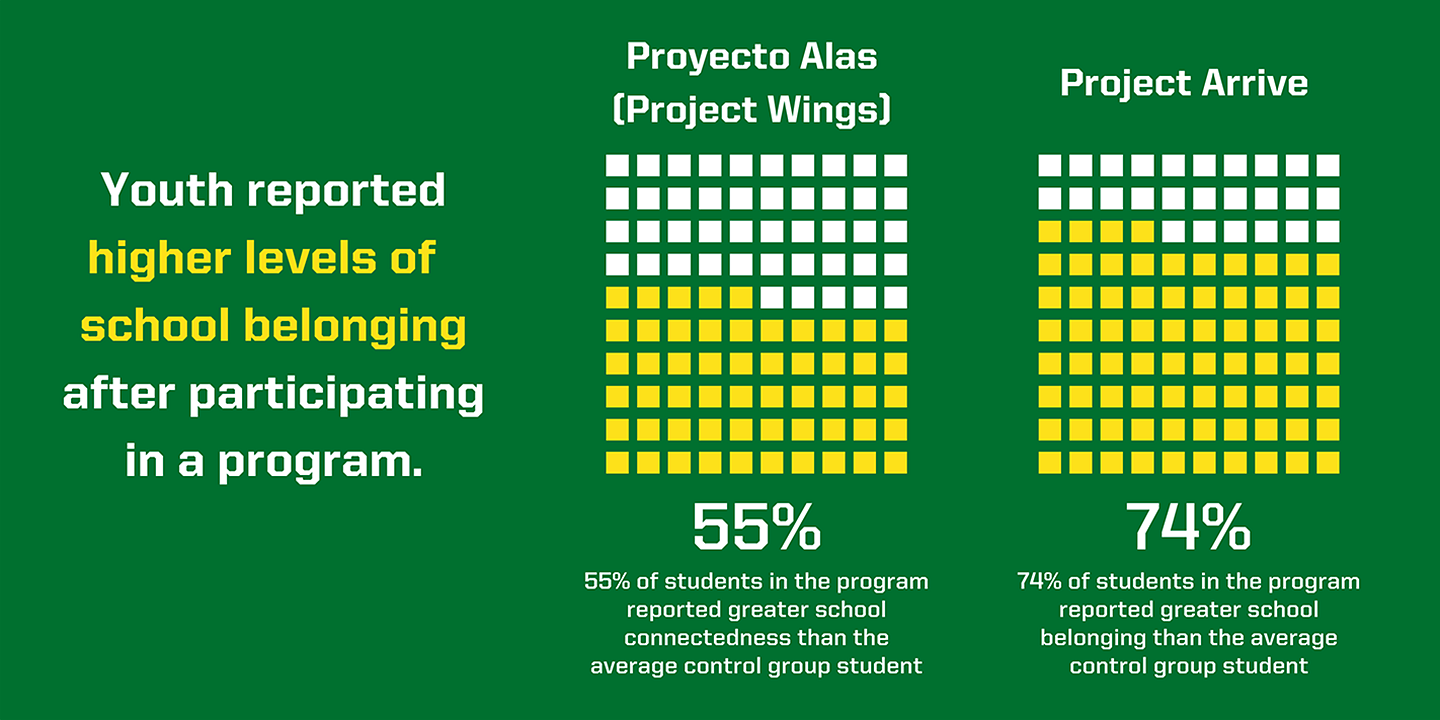By Maria Schweer-Collins, PhD, Research Assistant Professor, HEDCO Institute for Evidence-Based Educational Practice
Decades of research shows that school belonging is linked with positive outcomes for students. Although many students report feeling belongingness in school, a 2019 report shows that 1 in 5 students report feeling like an outsider at their school. And we know this experience of disconnectedness in school is even more common for students who identify as BIPOC, LGBTQIA+, or are from rural or lower socioeconomic backgrounds. Educators and school leaders often ask, “what can my school community do to promote school belonging?”
This month we share information on evidence-informed interventions available to schools for increasing students’ sense of school belonging. If you want to get caught up on school belonging, read our blog post from last month “What is school belonging, and why is it important?”
Programs to promote school belonging
Here we feature two programs that address school belonging for K-12 students. These programs endorse the explicit goal of promoting school belonging among students at risk of poor academic and social outcomes. If you are interested in reading more about other school belonging-focused interventions, you can access a full list in this systematic review (Allen et al., 2022).
Proyecto Alas (Project Wings)
The first program is “Proyecto Alas” a 16-week school-based, culturally specific program for Latine girls, that also has a home visitation component. This program can be delivered primarily in schools by school professionals. It was designed through a community-based participatory approach to ensure that the unique mental health needs and individual, family, and community factors that affect Latina girls were addressed. Preliminary findings find that Latina girls in “Proyecto Alas” show reduced levels of depression and stress and improvements in school connectedness.
Project Arrive
“Project Arrive” is a program delivered weekly throughout the entire school year by teachers or school staff to students entering 9th grade. An intervention delivered to small groups of 8-10 students, “Project Arrive” was designed as targeted prevention for youth at-risk for school drop-out, indicated by poor attendance and low grades at the end of 8th grade. The main goals of the program are to promote school connectedness at the transition to high school and to provide youth with consistent support for academic and social stressors. Students who participated in “Project Arrive” reported feeling supported by adults at their school and reported increases in meaningful participation in their school communities.

Where to go for other resources to build safe and connected classrooms and schools
- School belonging for LGBTQIA+ students, including a link to U.S. Department of Education’s toolkit on “Creating Inclusive and Nondiscriminatory School Environments for LGBTQI+ Students.”
- Edutopia has a series of short videos to guide educators in building safe, stable, and connected learning communities. We like “Building a Belonging Classroom” and “Fostering Belonging with Classroom Norms,” but there are 30+ videos on teaching strategies to improve student engagement and learning.
- If you are wondering about district level strategies to improve student belonging, check out this guide that offers some helpful concrete strategies.
- WestEd and the California Department of Education have a free “Climate Connection Toolkit” that can help you understand your school’s climate and identify strategies to address norms, practices, and policies that affect student’s feeling of connectedness.
Program Details:
Proyecto Alas (Project Wings)
Audience:
Latine Adolescents
Culturally sensitive components:
Designed with cultural match between participants and providers
Program content designed through community based participatory research to ensure that program goals were aligned with the mental health needs of Latine adolescent girls at the individual, family, and community levels.
Delivery details:
Delivered by bilingual, Latine school staff members
Delivery in-person (16 weeks, 3-hour sessions and a 3-month post program completion booster)
Delivery can be at school
Learn more: Research Study
Project Arrive
Audience:
9th graders at high risk for dropout due to poor attendance and low grades.
Culturally sensitive components:
Build connection with peers and teachers as soon as youth enter high school
Develop a sense of safety and belonging at school
Provide consistent support in addressing academic and life barriers
Increase social connection at school
Delivery details:
Delivered by teachers or school personnel
Delivery is in-person in group format (weekly session throughout school year)
Delivery can be at school
Learn more: http://sites.gsu.edu/project-arrive/
HEDCO Institute Blog 4 - August 31, 2023
Explore more:



